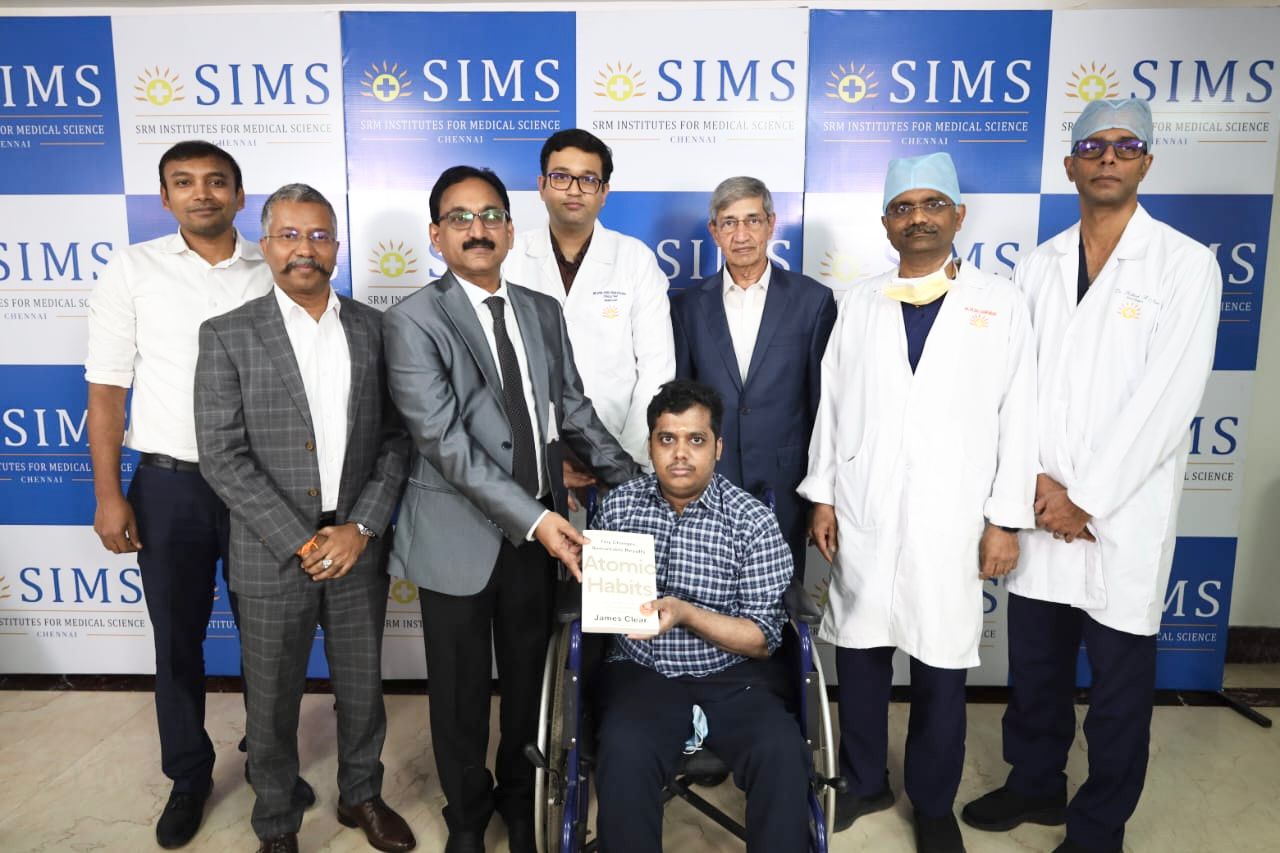Chennai, 18 November 2025: SIMS Hospital successfully treated a recurrent stroke in a 29-year-old man caused by a blood clot in his brain, and also saved his heart and leg by promptly treating additional clots in these two organs, an extremely rare medical presentation. The likelihood of a young adult developing simultaneous multi-organ clots along with a second stroke is considered an exceptional medical rarity.
The patient had been diagnosed earlier with Antiphospholipid Antibody Syndrome (APLA), an autoimmune condition that increases the risk of abnormal clot formation. He suffered his first stroke in 2022 at the age of 26. This stroke was massive requiring an emergency decompression surgery. A short interruption in his regular medication triggered this second and far more severe episode. When he noticed early symptoms such as slurred speech, he immediately rushed to SIMS Hospital. His quick response played a crucial role in preventing permanent damage.
The case was jointly managed by Neurology specialists Dr. Prabash Prabhakaran and Dr. Vivek Iyer, along with Interventional Neurologists Dr. Rithesh R. Nair and Dr. S. Selvin, supported by vascular and endo vascular surgeon Dr. Sairam Subramaniam. The patient has been discharged, is stable and will require lifelong medication with regular follow-up.
Speaking on the rarity and complexity of the situation, Dr. Vivek Iyer, Joint Director Neurology, said, “This case was a true medical challenge. A 29-year-old presenting with a second stroke and simultaneous clots in three major organ systems is extremely rare. It is one of the most complex situations we have ever encountered, and it required a highly coordinated, multidisciplinary approach to manage the immediate threat and secure a positive long-term outcome.”
Highlighting the importance of early action Dr. Prabash Prabhakaran, Director and Senior Consultant, Neurology, said, “Stroke can affect people of any age, and knowing the symptoms is essential. This patient’s self-awareness and quick action were instrumental in his survival. Recognising the early signs of stroke and reaching the hospital without delay gave us a critical window to intervene.”
As detailed evaluations confirmed the presence of clots in the brain, heart and right leg, the interventional team performed a surgical thrombectomy to remove the clot from the right femoral artery in his leg. At the same time, they administered clot-dissolving medication to clear the blockages in his heart and brain. Managing clots in three organs at once is considered highly challenging because each clot presents different risks and requires different treatment strategies. The coordinated effort between surgical and medical teams helped restore blood flow to all affected areas and prevented irreversible damage.
Explaining the interventional complexity, Dr. Rithesh R. Nair, Director and Senior Consultant, Interventional Neurology, said, “Our immediate goal was to restore blood flow. The thrombectomy in his leg was critical, but it had to be carried out while simultaneously treating the clots in his heart and brain. This case shows how far interventional neurology has advanced and how these techniques can be used to manage highly complex, multi-site clotting events.”
The doctors noted that India records about 1.6 million new stroke cases each year with an incidence of 119 to 145 cases per 100,000 people – the number of strokes among individuals below 40 years of age has been rising. Sedentary lifestyle, chronic stress, unhealthy diets, poor sleep habits, altered blood clotting patterns, long-term exposure to pollution and microplastics, and traditional risk factors such as uncontrolled hypertension, diabetes, high cholesterol, smoking and high alcohol intake are contributing to this trend.
The experts noted that stroke treatment has improved significantly in the last two decades. With thrombolysis and modern mechanical thrombectomy, doctors can now restore blood flow even in smaller and medium-sized blood vessels. These advances have greatly improved patient outcomes, although timely recognition and early hospital arrival remain the most important factors.

